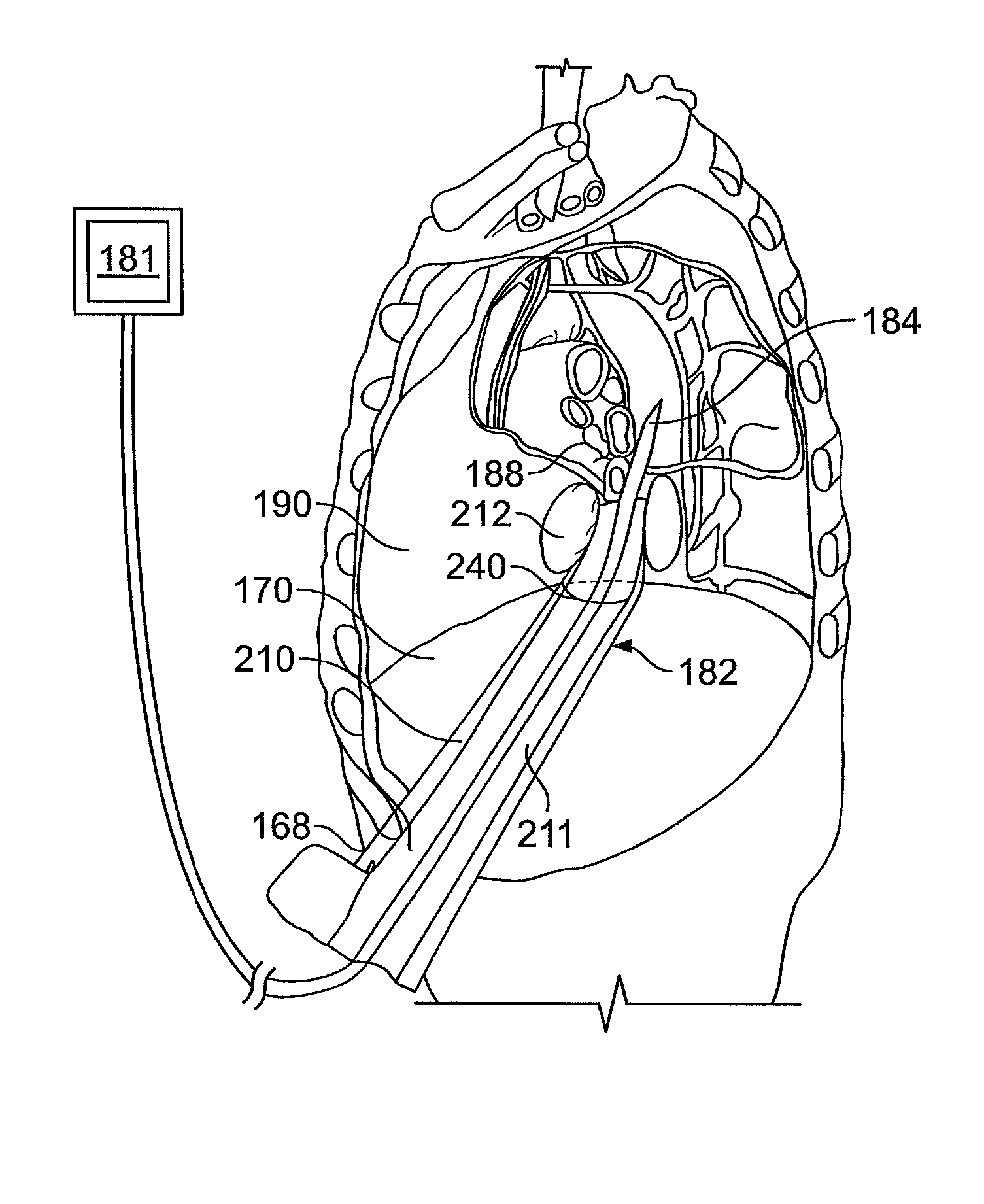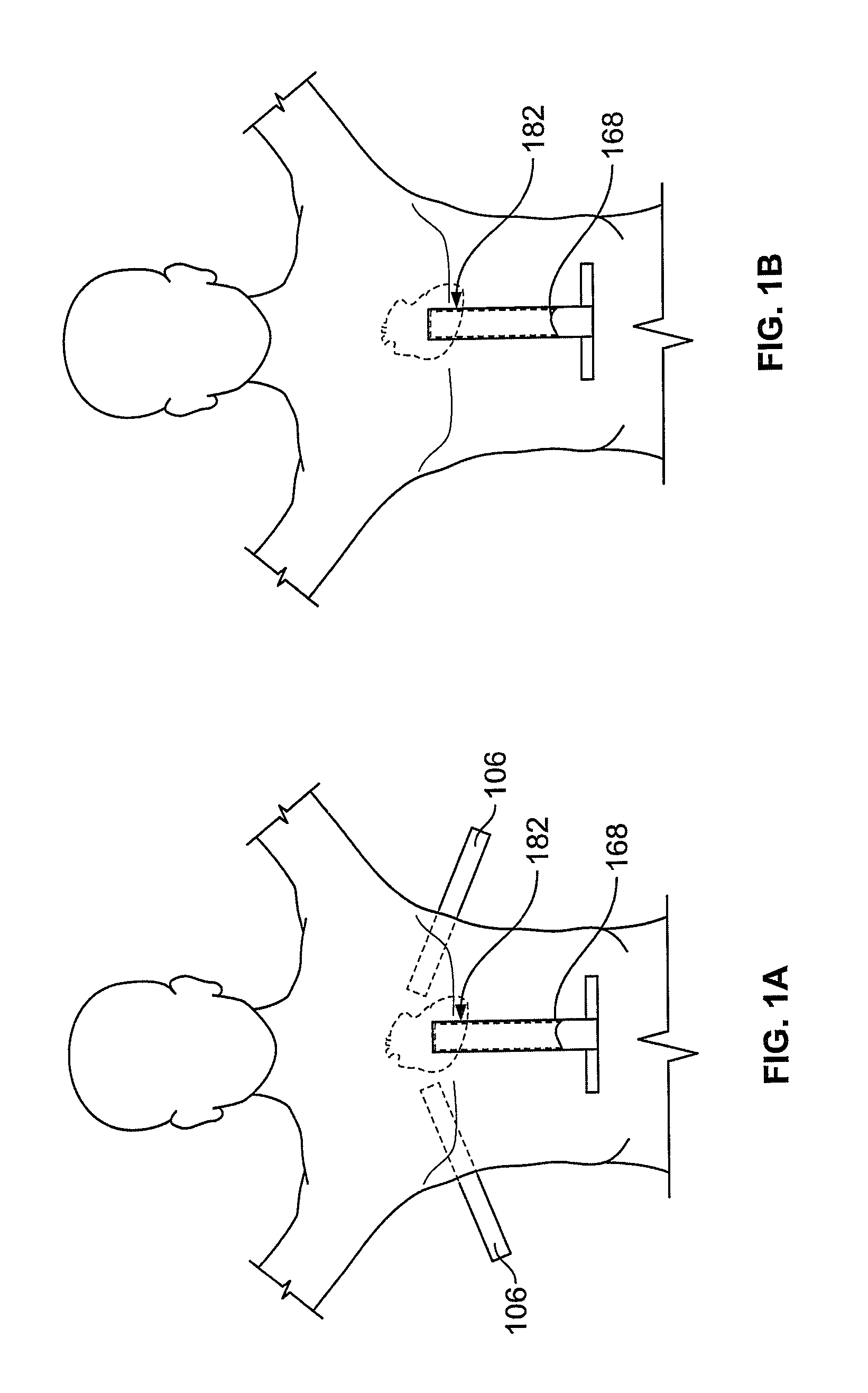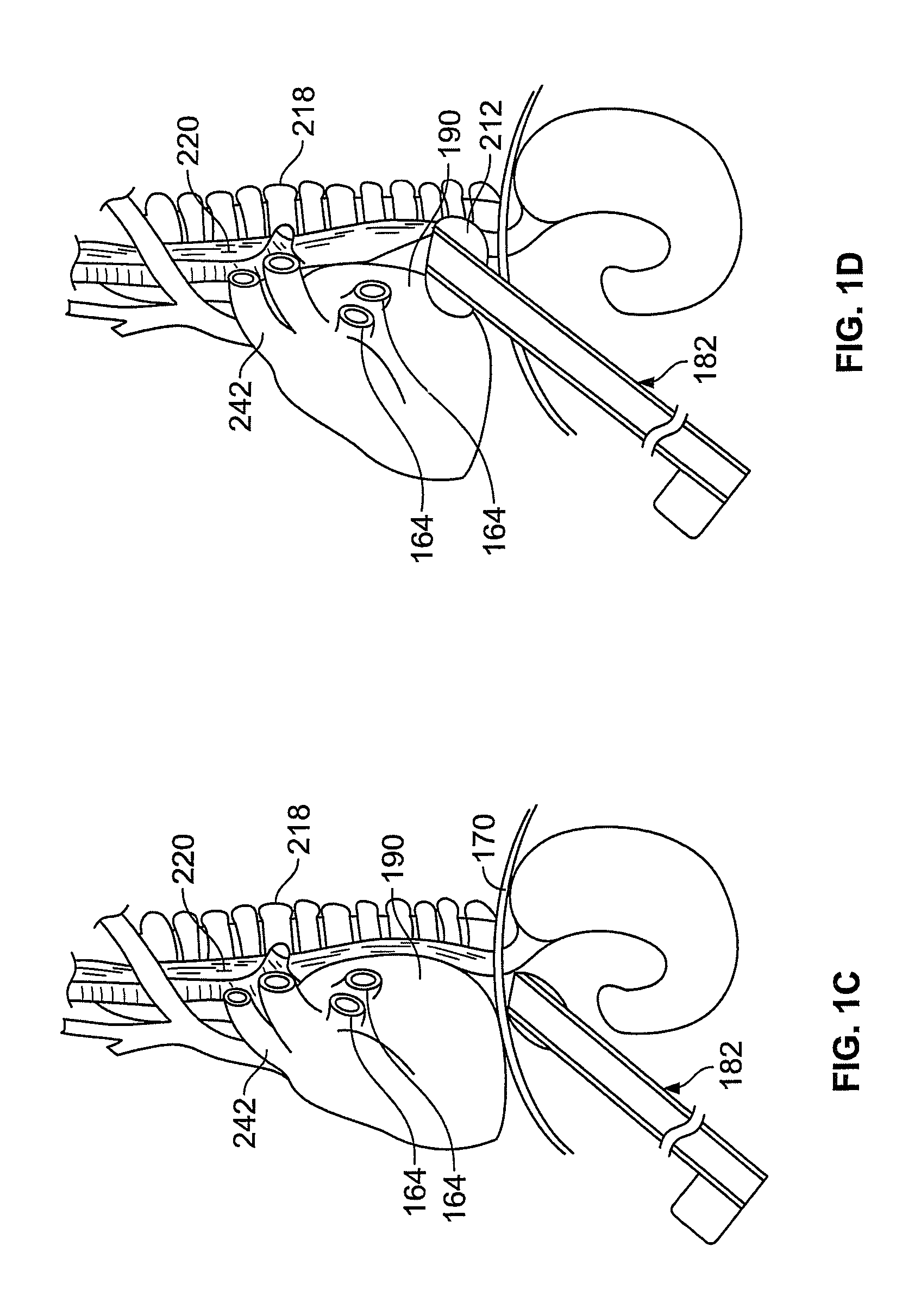Diaphragm entry for posterior surgical access
a technology for a diaphragm and a posterior section, which is applied in the direction of surgical staples, surgical forceps, therapy, etc., can solve the problems of unfavorable hemodynamics, unfavorable patient coughing or dramatic movement, and the anterior surface of the heart or other organs is still not readily visible, and achieves the effect of sufficient column strength
- Summary
- Abstract
- Description
- Claims
- Application Information
AI Technical Summary
Benefits of technology
Problems solved by technology
Method used
Image
Examples
Embodiment Construction
[0063]Methods and devices described herein provide for improved manipulation of organs and / or instruments in the thoracic cavity. The methods and devices may allow for direct visualization along the posterior region of the heart and other anatomic structures not attainable with conventional thoracic approaches. Furthermore, the methods and devices described herein may be used in conjunction with, or as an alternative to the conventional approaches described herein. In general, the surgical approaches and procedures described herein rely on entry through the diaphragm of a patient to access a posterior region of that patient (the procedure hereafter referred to as “Diaphragm Entry for Posterior Access” or simply “DEPA”). The DEPA procedure may also be referred as VAPS (Video-Assisted Pericardiac Surgery) or TAPS (Trans-Abdominal Pericardiac Surgery).
[0064]FIGS. 1A to 1B show examples of placement of access devices 182 (also referred to as a separator or an elevator herein) under the ...
PUM
 Login to View More
Login to View More Abstract
Description
Claims
Application Information
 Login to View More
Login to View More - R&D
- Intellectual Property
- Life Sciences
- Materials
- Tech Scout
- Unparalleled Data Quality
- Higher Quality Content
- 60% Fewer Hallucinations
Browse by: Latest US Patents, China's latest patents, Technical Efficacy Thesaurus, Application Domain, Technology Topic, Popular Technical Reports.
© 2025 PatSnap. All rights reserved.Legal|Privacy policy|Modern Slavery Act Transparency Statement|Sitemap|About US| Contact US: help@patsnap.com



